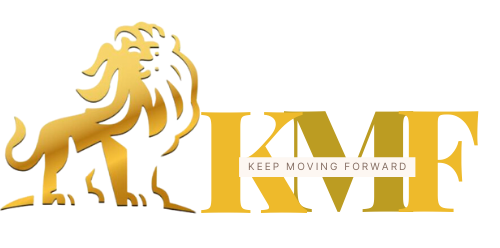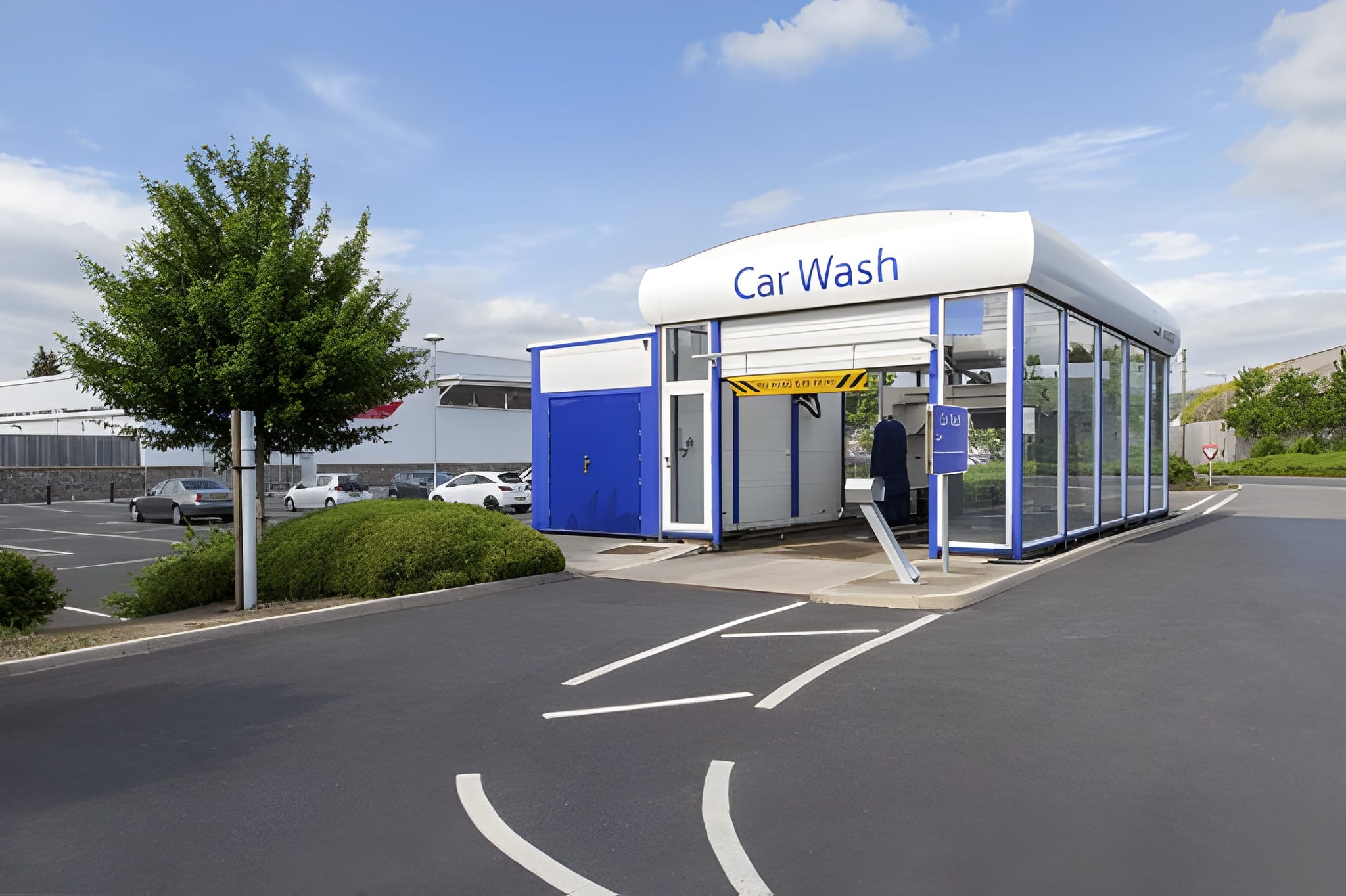- 9825 Marina Blvd #100, Boca Raton, FL 33428
- 561-609-7325
Follow Us :

October 18, 2025

In today’s economy, where stability and automation are king, few small businesses offer the same level of consistent profit and scalability as a car wash business. With predictable recurring demand, low inventory costs, and high margins, car washes continue to be one of the most attractive opportunities for entrepreneurs and investors alike.
According to the International Carwash Association (ICA), the U.S. car wash industry generates over $15 billion annually and serves approximately 8 million vehicles each day. What’s even more encouraging is that profitability has grown steadily over the past decade, driven by technology, automation, and subscription-based business models.
So, how profitable is it really to own a car wash in 2025?
The short answer: very profitable — when managed strategically.
With profit margins averaging 30%–60%, depending on the type of operation, a well-located and well-marketed car wash can produce six-figure annual income while requiring far less day-to-day involvement than other service-based businesses. The key is understanding what drives profitability — from location and pricing to efficiency and marketing.
In this guide, we’ll break down how car washes make money, average profit margins by type, and proven strategies for maximizing revenue and ROI.
Every car wash, regardless of size or model, operates around the same core financial principle: consistent, repeatable service demand. Unlike many industries, car washes benefit from both necessity-based spending (people need clean vehicles) and impulse-based purchases (convenience and appearance). This combination keeps cash flow steady even when other businesses fluctuate.
Car washes make money through multiple revenue streams — some obvious, others often overlooked. Diversifying these income channels is the secret to long-term profitability.
Here’s a breakdown of the primary revenue sources:
Standard exterior cleaning options ranging from $10–$20 per wash. These represent the bulk of daily volume.
Services such as waxing, underbody cleaning, and spot-free rinses command higher prices ($25–$40) and increase the average ticket value.
High-margin add-ons that can range from $50–$200 per vehicle. Detail services dramatically boost revenue and appeal to loyal, high-value customers.
Monthly unlimited wash plans (usually $30–$40/month) provide predictable recurring revenue. Many operators report that up to 50% of total revenue now comes from memberships.
Selling air fresheners, towels, and other accessories adds supplemental profit. Partnerships with gas stations or auto repair shops can also create referral income.
By optimizing these diverse streams, even small facilities can see significant returns.
For example, a 4-bay automatic car wash with 300–400 daily customers can easily gross over $400,000–$600,000 annually — with net margins in the 35–50% range.
One of the biggest shifts in the car wash industry over the last five years has been the rise of subscription-based revenue.
Instead of relying solely on individual transactions, many operators now offer monthly membership programs, which provide unlimited washes for a flat monthly fee. These programs not only create predictable income but also strengthen customer loyalty.
Even during slow months, recurring payments keep revenue steady.
Subscribers are 2–3 times more likely to stay loyal compared to one-time visitors.
The longer a member stays, the higher their overall contribution to profit.
Less spending on ads to attract new customers — memberships focus on retention.
Some successful operators have converted 60–70% of their customer base into members, generating tens of thousands in automatic recurring revenue monthly.

A 300-member base paying $35/month equals $10,500 in guaranteed monthly income — before a single walk-in customer even arrives.
Profitability varies depending on your business model, location, and cost structure. Each type of car wash comes with a unique balance of risk, investment, and return.
Here’s what you can expect in 2025:
Car Wash Type | Average Profit Margin | Typical Startup Cost | Annual Revenue Potential | Notes |
Self-Service | 30–40% | $150K–$300K | $100K–$250K | Low labor cost; income depends on volume. |
Automatic / Tunnel | 40–55% | $400K–$800K | $250K–$600K | Scalable and partially automated. |
Full-Service / Detailing | 50–65% | $500K–$1M+ | $500K–$900K | High-touch, premium model; labor intensive. |
Mobile Car Wash | 25–45% | $15K–$50K | $60K–$150K | Flexible, low barrier to entry. |
The sweet spot for most investors lies in automatic or full-service models, where recurring memberships and higher per-customer value drive stronger margins.
Self-service setups tend to perform best in suburban areas with minimal competition, while mobile operations thrive in dense urban markets.
Across all models, profitability is determined by a mix of five major factors:
The combination of smart operations and consistent marketing is what separates top performers from average owners.
One of the first questions new investors ask is: “How long will it take for my car wash to pay for itself?”
The answer depends largely on the type of car wash, your location, and how efficiently you operate.
In general, the average return on investment (ROI) for a car wash business ranges from 20% to 35% annually, with most owners breaking even within 2–4 years.
Let’s look at the cost-to-profit breakdown more closely.
Business Type | Startup Cost | Annual Net Profit | Average ROI | Break-Even Point |
Self-Service | $150K–$300K | $50K–$100K | 20–25% | 3–4 years |
Automatic / Tunnel | $400K–$800K | $150K–$250K | 25–30% | 3 years |
Full-Service | $500K–$1M+ | $200K–$350K | 30–35% | 2–3 years |
Mobile Car Wash | $15K–$50K | $25K–$60K | 40–45% | 1–2 years |
As shown, mobile car washes have the fastest payback period due to low startup costs, while full-service and tunnel models generate higher long-term returns thanks to volume scalability.

Focus on cash flow over gross revenue. A small car wash with a 60% profit margin can outperform a high-volume site with thin margins if managed efficiently.
To determine how soon you’ll recoup your investment, consider wash volume, average ticket price, and operating costs.
Here’s a simplified example for a typical automatic car wash:
Metric | Value |
Average Wash Price | $15 |
Daily Customers | 250 |
Monthly Revenue | $112,500 |
Monthly Expenses (labor, utilities, chemicals) | $65,000 |
Monthly Profit | $47,500 |
Annual Profit | ~$570,000 |
If your total investment was around $700,000, you’d hit your break-even point in roughly 15–18 months, assuming consistent traffic and membership growth.
While car washes can be lucrative, profits can vary significantly based on five major factors:
A car wash near busy intersections, shopping centers, or residential zones will always outperform one in a low-visibility area. Choose locations with 20,000+ vehicles per day for optimal foot traffic.
Warmer states like Florida, Texas, and Arizona often enjoy year-round wash volume, while northern regions experience seasonal peaks (spring and summer) that can offset winter slowdowns.
Modern water reclaim systems and energy-efficient dryers can reduce monthly utility bills by 30–40%. Automation doesn’t just save labor — it enhances profitability.
Digital marketing and loyalty programs are the lifeblood of recurring revenue. Many operators report that Google Maps visibility and positive reviews drive 50% of their walk-in traffic.
Regular maintenance ensures consistent uptime. Even minor equipment downtime can cost hundreds per day in lost revenue. Successful owners often reinvest 3–5% of annual profits into preventive maintenance.
Profitability isn’t just about the number of cars washed — it’s about optimizing every aspect of operations.
Below are proven ways to increase both revenue and efficiency in your car wash business:
Train staff or program your automated systems to offer upgrades like:
These add-ons can raise your average ticket value by 20–30%, with minimal added labor or supply cost.
As covered earlier, subscription plans transform cash flow stability.
Consider these program types:
Adding just 200 subscribers can provide over $7,000/month in guaranteed revenue, independent of weather or seasonality.
Smart automation equals higher profits. Install systems that reduce labor dependency while maintaining quality.
Examples include:
Not only do these upgrades improve your bottom line — they also enhance your business’s resale value.
Marketing doesn’t have to break the bank. The key is consistency and targeting.

Case Study: Profit Analysis of a Successful Car Wash Owner
Let’s look at a realistic financial scenario for a profitable full-service car wash:
Category | Annual Amount (USD) |
Total Revenue | $750,000 |
Cost of Goods Sold (Supplies, Water, Energy) | $110,000 |
Labor Expenses | $220,000 |
Rent / Lease | $60,000 |
Marketing | $20,000 |
Maintenance / Insurance | $40,000 |
Net Profit (Before Tax) | $300,000 (40%) |
This example illustrates that with strong management and marketing, a car wash can achieve 40% profitability or higher, generating consistent six-figure income year after year.
While starting fresh has advantages, buying an existing car wash can often deliver faster profits.
Here’s why:
However, to ensure the deal is sound, you’ll need professional guidance to evaluate ROI potential and avoid hidden liabilities.
That’s where expert brokers — like KMF Business Advisors LLC — provide an edge.
Specialized brokers analyze not just current profits but future scalability.
KMF Business Advisors LLC, led by John Bucher, helps entrepreneurs:
By working with experienced advisors, buyers can target high-performing car washes that align with their budget and income goals — minimizing risk while maximizing returns.

Common Profitability Mistakes (and How to Avoid Them)
While car wash ownership is an excellent opportunity, many first-time owners fall into avoidable traps that reduce profitability. Learning from these mistakes ensures your business runs smoothly and consistently generates strong returns.
Here are the most common profitability mistakes — and how to prevent them.
It’s easy to overlook recurring expenses like chemicals, water, electricity, and maintenance. A profitable car wash depends on accurate cost tracking and forecasting.

Even with a great location, customers won’t appear automatically. Many owners underestimate the power of consistent local marketing — both online and offline.

Your business’s long-term success depends on happy, returning customers. Poor service, long wait times, or unclean facilities can quickly destroy loyalty.

Many operators still rely solely on single washes, missing out on recurring revenue that memberships provide.

Without tracking performance metrics, it’s impossible to identify weak spots or measure marketing ROI.

If you bought a car wash without broker assistance, you may have overpaid or inherited unseen liabilities. This is one of the costliest mistakes an entrepreneur can make.

FAQs About Car Wash Business Profitability
Conclusion: Turning Clean Cars into a Profitable Business Future
The car wash business remains one of the most financially rewarding small business opportunities available in 2025. With predictable demand, low inventory requirements, and increasing automation, it offers entrepreneurs the perfect blend of stability and scalability.
However, profitability doesn’t happen by chance — it’s the result of smart planning, consistent execution, and strategic guidance. Understanding your costs, optimizing operations, and building customer loyalty through memberships are the pillars of long-term success.
If you’re considering entering this industry, now is the time. Whether you plan to build from the ground up or buy an existing operation, working with experienced advisors can make all the difference.
That’s where KMF Business Advisors LLC comes in. Led by Broker and President John Bucher, the firm helps entrepreneurs evaluate opportunities, negotiate deals, and acquire businesses designed for profitability and growth. Their expertise ensures your investment starts strong and scales with confidence.

